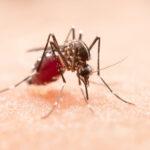
In this article
As you age, your risk of having a stroke increases significantly. In fact, after age 55, your risk of stroke nearly doubles every 10 years. However, strokes can happen at any age, and recent research indicates that stroke rates are rising among younger people. Therefore, knowing the early warning signs of a stroke is crucial regardless of your age. These signs can include sudden dizziness, a severe headache, or neck pain.
Understanding Mini-Strokes (Transient Ischemic Attacks)
A transient ischemic attack (TIA), often called a mini-stroke, occurs when there is a temporary interruption in blood flow to the brain. A TIA is a significant warning sign, as approximately 20% of people who experience a TIA will have a stroke within the next 90 days. The symptoms of a TIA mirror those of a full-blown stroke, including changes in alertness, muscle function, or balance.
Remember to Act F.A.S.T.
The acronym F.A.S.T. can help you recognize the most common stroke symptoms and remind you to seek immediate medical attention:
- Face: Check for drooping or numbness on one side of the face.
- Arm: Look for weakness or numbness in one arm.
- Speech: Listen for slurred or strange speech.
- Time: Call 911 immediately if any of these symptoms are present.
Warning Signs
Other early signs of a stroke can include sudden:
- Confusion or trouble understanding speech
- Difficulty walking
- Dizziness, loss of balance, or coordination issues
- Severe headache with no known cause
- Vision problems in one or both eyes
- Weakness or numbness in the legs, especially on one side
“If you experience a combination of these symptoms, something is likely wrong,” says Dr. David Liebeskind, director of the Neurovascular Programs at Ronald Reagan UCLA Medical Center. He also notes that symptoms that are unusual for you, or that come with neck pain or a recent fall, should be taken very seriously.
Preparing for a Stroke
Strokes can happen to anyone at any time. Knowing the signs can ensure you get prompt medical attention. Additionally, keep a list of the nearest hospital with a 24-hour stroke facility, and note any medications you take or allergies you have. Be aware of risk factors such as:
- Age
- Diabetes
- Family history
- Heart disease
- High blood pressure or cholesterol
- Lifestyle factors like lack of exercise, tobacco use, and excessive alcohol consumption
- Obesity
- Previous strokes or TIAs
- Gender
- Sickle cell disease
Immediate Actions During a Stroke
If you suspect you are having a stroke, call for an ambulance immediately instead of driving yourself or asking someone else to drive you. Paramedics can begin treatment on the way to the hospital, which can be crucial. If a healthcare provider tries to diagnose you with something else, such as an inner ear infection or migraine, don’t hesitate to ask, “Why do you think it’s not a stroke?” Dr. David Newman-Toker from Johns Hopkins University School of Medicine advises seeking a reasonable explanation. If you’re not satisfied with the response, request to see another doctor.
By recognizing the early signs of a stroke and knowing how to respond, you can significantly improve your chances of a better outcome. Stay informed and prepared to protect your health.
A Quick Review
Strokes can happen at any age, with risk doubling every decade after 55. Recognize early symptoms like sudden dizziness, severe headache, and neck pain. Use the F.A.S.T. acronym (Face, Arm, Speech, Time) to identify strokes. Quick action can save lives, so always call 911 immediately.











